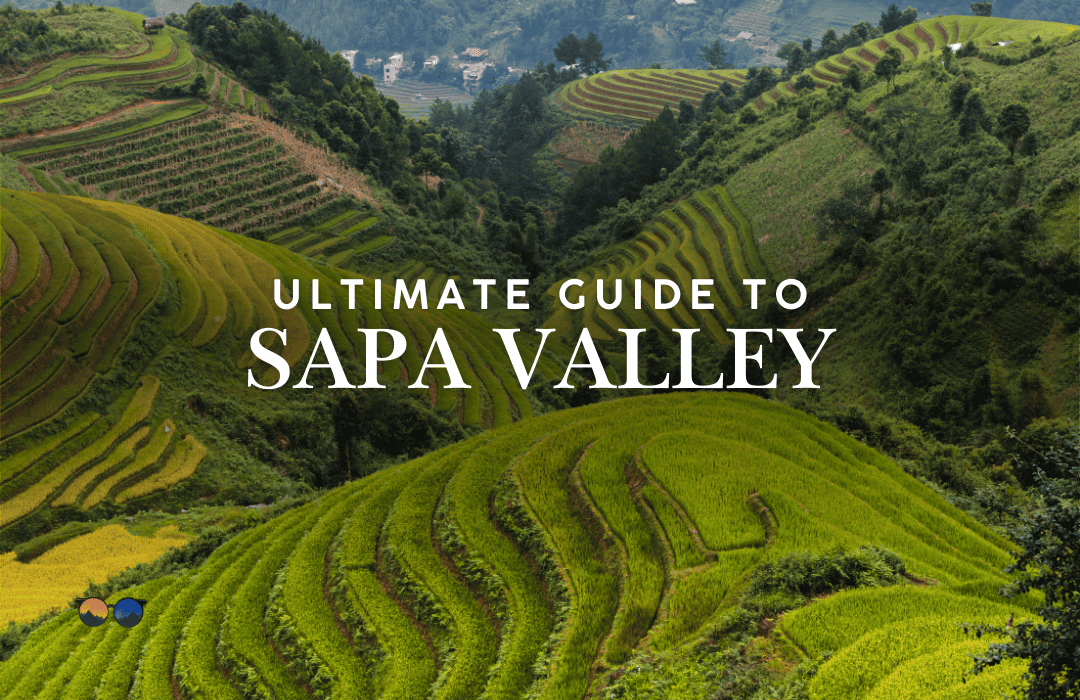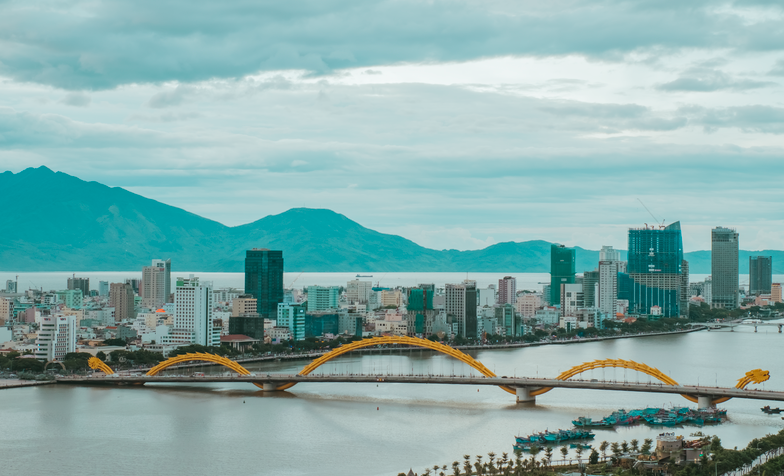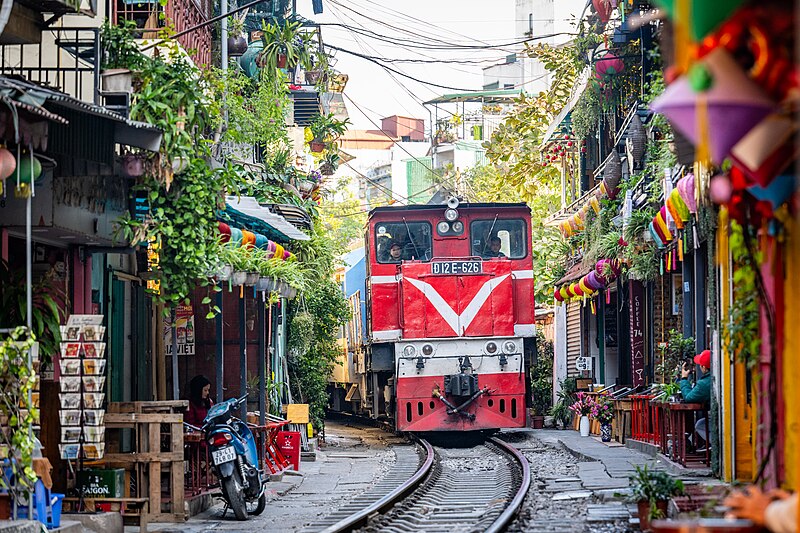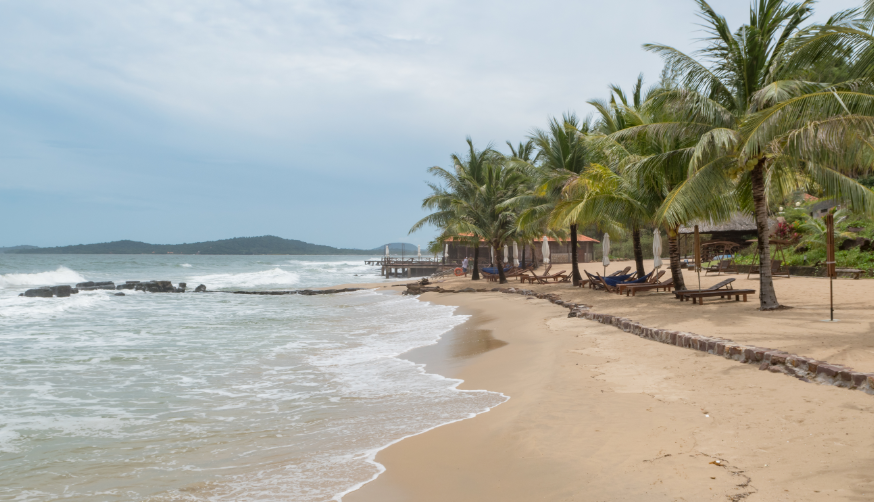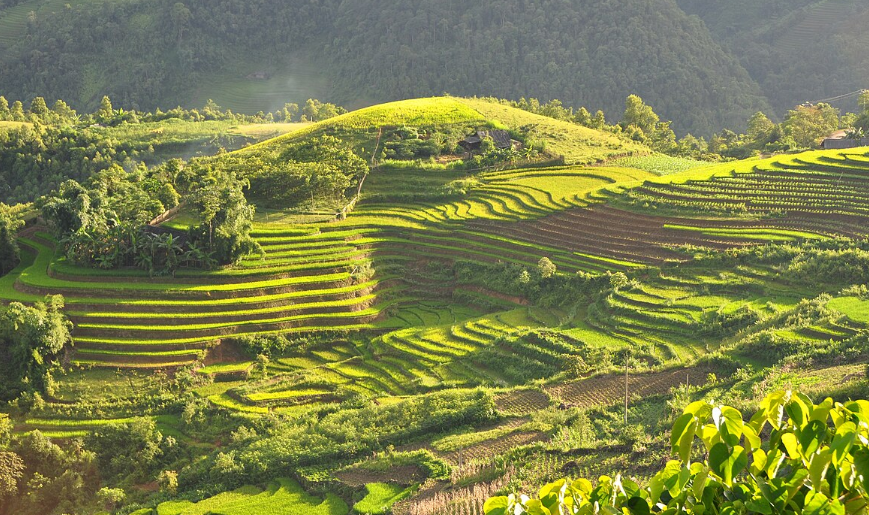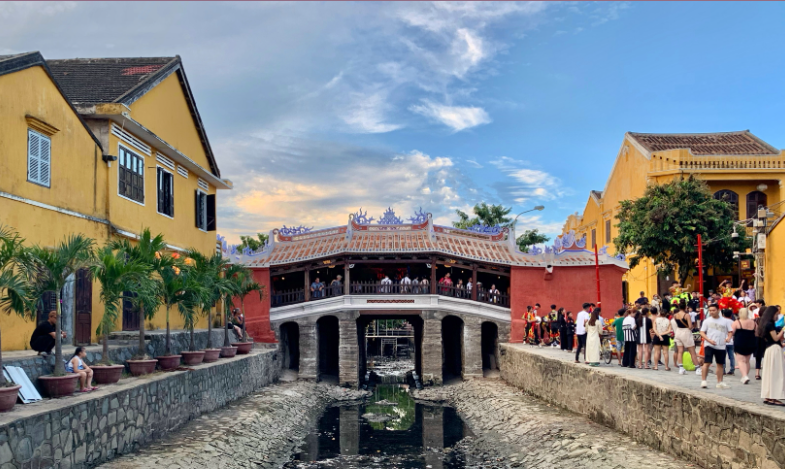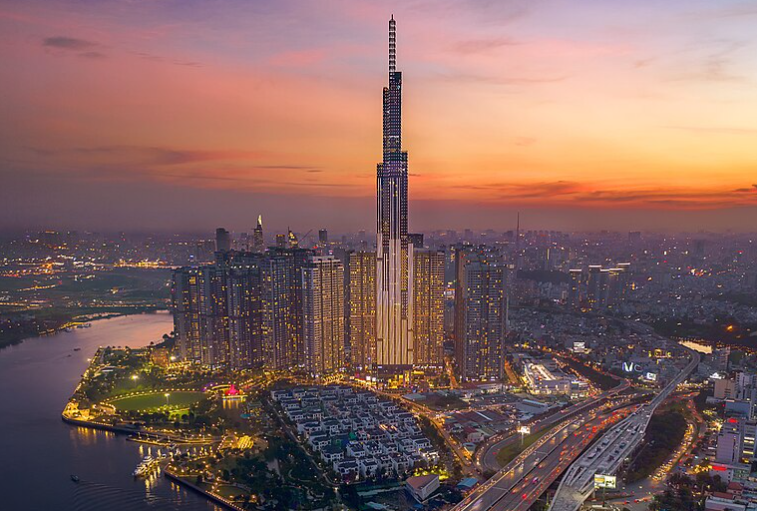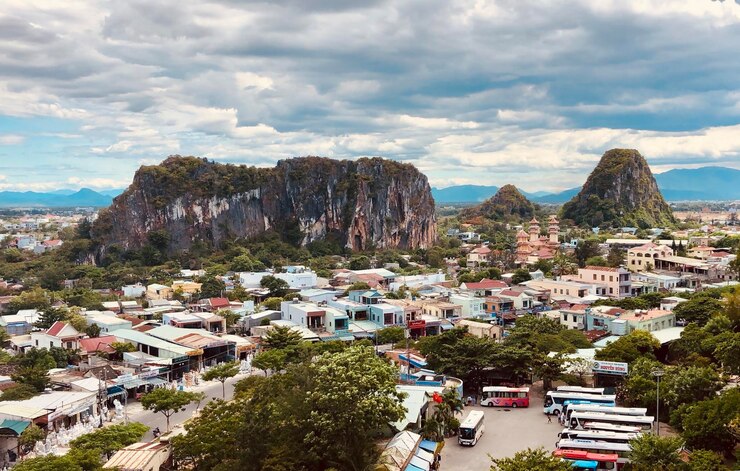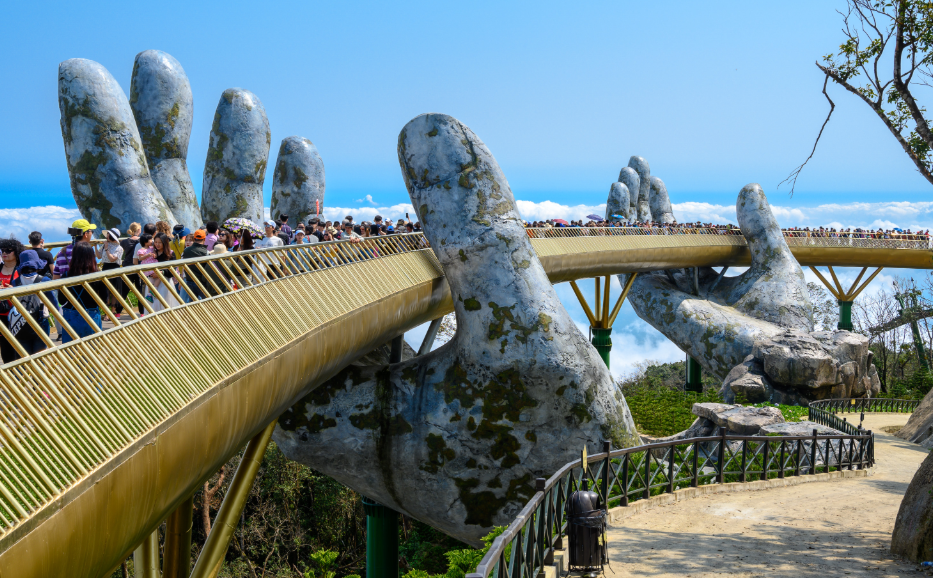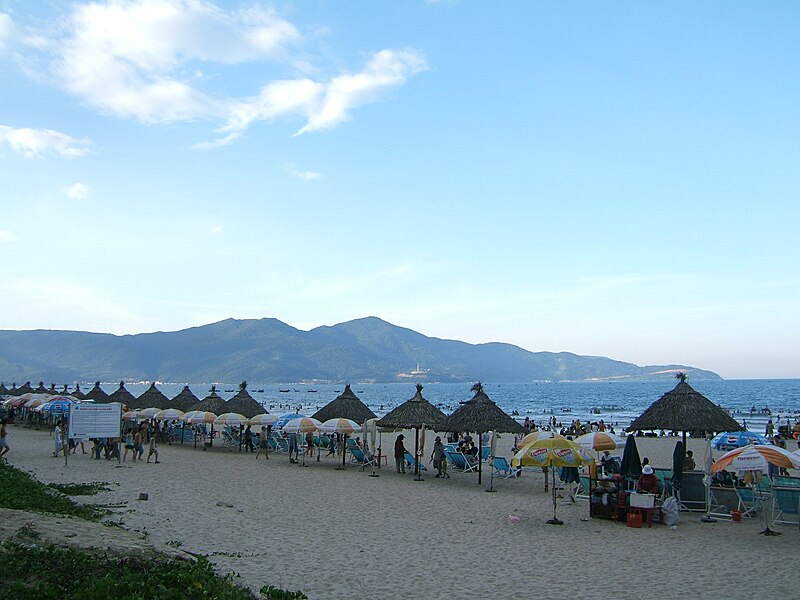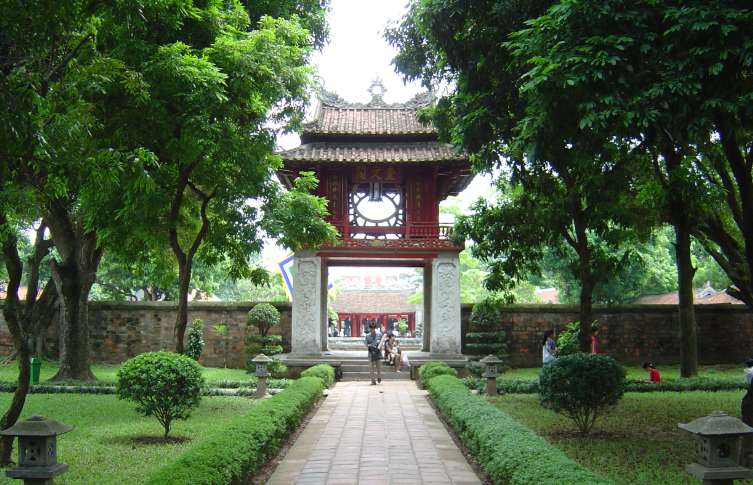Sapa Valley is located in northern Vietnam, and it remains one of the most beautiful and quiet places in the country. Characterized by striking sceneries, rice terracing, and colorful hill tribes, Sapa is a splendid outdoor and ethnological destination. This guide to Sapa Valley is for those who are fond of trekking, who like to travel to embrace nature, and every simple tourist who wants a unique experience here.
Places to Visit at Sapa Valley
Here are some places you should not miss when you visit Sapa Valley.
1. Fansipan Mountain: Roof of Indochina
Fansipan, with an altitude of about 3143 meters, is the tallest mountain in the Indochina region and is quite rightly one of the most defining features of the natural beauty of Sapa. The mountain has a challenging trail, though a rather glamorous cable car can be used to get to the top of the mountain. The top offers spectacular and panoramic views of Sapa Valley and other proximal towering peaks.
Guide to Fansipan Mountain:
- Cable Car Hours: Open daily from 7:30 AM to 5:30 PM.
- Trekking: A guided tour takes 1-2 days, depending on the physical condition of the person on the Mountain.
- Best Time to Visit: Viewed best during the months of September, October, and November because there are few clouds in the sky.
- Cable Car Station: Sun World Fansipan Legend, Mường Hoa, Sapa, Lao Cai, Vietnam.
2. Muong Hoa Valley
Muong Hoa Valley boasts beautiful rice-terracing slopes resembling stairways on the hillsides. It is one of the great places to view any scenery throughout the year. During the September-October seasons, ridges of rice paddies yield golden colors. You can hike through the valley, cross some streams, and make stops to see typical villages of the black Hmong and Red Dao ethnic groups.
Guide to Muong Hoa Valley:
- Best Time to Visit: September-October for the famous rice terraces.
- Trekking: Hiking: You can go in coordination with your local guide to have a splendid trekking tour.
- Location: Muong Hoa Valley is about 8 kilometers from the center of Sap town.
3. Cat Cat Village
Just about 3 km from the actual Sapa town is Cat Cat Village, one of the oldest and most originally ethnic-traditional villages of the Hmong people. Visitors can walk through the village to see how this community of the Hmong people lives their everyday lives. Religious sites and cultural presentations of the tribes can be seen. At the same time, traditional basket and cloth weaving alongside local black-smithing can also be enjoyed while sampling a honeycomb doughnut and delightful local food. The village also has a waterfall called Cat Cat Waterfall, which is situated behind the village and inside the forest.
Guide to Cat Cat Village:
- Opening Hours: Daily operations are from 6:00 AM to 5:00 PM.
- Entrance Fee: A small entry fee is required.
- Best Time to Visit: Early morning or late afternoon when few people are on the roads.
- Location: Located about 3 kilometers from Sapa town, it can be accessed by walking or motorbike.
4. Silver Waterfall (Thác Bạc)
Silver Waterfall is one of the amazing waterfalls. It is situated about 12 km from Sapa town. It measures approximately 200 meters in height and is adorned with silvery mists that paint the scene. In a short time, a trek leads the visitors to the waterfall's base, where water gushes and the environment is calm.
Guide to Silver Waterfall:
- Opening Hours: 6:00 AM to 5:00 PM.
- Entrance Fee: A small entrance fee is to be paid before entry to view the waterfall.
- Location: On the route between Sa Pa town and Tram Ton Pass.
5. Ham Rong Mountain
For those who would not like to hike and are seeking a bird's eye view of the town of Sapa, there is the Ham Rong Mountain just behind it. Visitors on the mountain can view beautiful gardens, cultural dances of ethnic tribes, and several vantage points that provide opportunities to capture incredible views of the entire Sapa region and Fansipan mountain.
Guide to Ham Rong Mountain:
- Opening Hours: Open daily from 7:00 AM to 6:00 PM.
- Entrance Fee: A nominal entry fee applies.
- Best Time to Visit: Early morning or late afternoon for clear skies and fewer visitors.
- Location: Right behind Sapa town, easily accessible by foot.
Things to Do in Sapa Valley
Here are a few activities to immerse yourself in Sapa Valley's local culture and natural beauty.
1. Trekking Through Sapa's Terraced Fields
Sapa is a trekkers’ haven because it offers routes over rice paddies, bamboo groves, and past villages. The treks vary from easygoing to strenuous depending on the program and strength of the individual. Hiking using the services of a guide will allow you to see some of the best trails. Apart from this, you will also have an opportunity to meet indigenous people such as the Hmong, Red Dao, and Tay.
Travel Tip: The ideal condition for trekking is from September to November when the temperature is low, and the view over the golden rice paddies is excellent.
2. Visit Local Markets
Sapa markets are among the most colorful and lively markets where the members of different ethnic groups come to buy and sell everything ranging from vegetables to animals, clothes, and other handicrafts. Bac Ha Market, which opens every Sunday, and Can Cau Market on Saturday, are colorful places where traditional costumes can be seen, local foods can be tasted, and clothes, accessories, and jewelry can be bought.
Local Recommendations:
- Bac Ha Market: Sited about 2 hours south of Sapa and best visited in the morning on Sunday.
- Can Cau Market: Much the same kind of market situated about 3 hours away from Sapa and operates mostly on Saturdays.
3. Stay in a Local Homestay
Nothing is more fulfilling than trips to Sapa than spending a night with a local family in a homestay. These stays afford an opportunity to interact with other hill tribe people and learn aspects of living, such as cooking or even farming. In fact, those that are actually settlements or zones, like Ta Van or Lao Chai, are pretty immersive and really interesting homestays.
Travel Tip: If people want to stay in a homestay, they should consult reputable tour guides.
4. Take a Motorbike Tour
For anyone wanting to take up an adventurous way of travel, one of the most appropriate ways to travel in Sapa is on a motorbike. These include cruising along serpentine routes, paying courtesy visits to the uncharted patches of the mountains, and exploring those sites and towns not usually frequented by tourists. Some favorites include the Lai Chau road or the O Quy Ho – one of Vietnam's most picturesque mountain roads.
Travel Tip: If you're uncomfortable driving, you can hire a local guide to take you on a motorbike tour.
Best Time to Visit Sapa Valley
Sapa is beautiful all year round, but the best time to go is during the dry season: September to November and March to May. These are the months when the climate is cool and dry, and this is the best time to go trekking and sightseeing. September is particularly picturesque because the rice fields are still golden before harvest.
Travel Tip: Sapa truly undergoes a chilling winter, and the season lasts from December to February, when the climate can sometimes freeze. If visiting during this time, make sure to pack warm clothes.
How to Get to Sapa Valley
Sapa is about 320 kilometers northwest of Hanoi city. The easiest way, and most commonly used, is by taking the train or bus from Hanoi to Lao Cai and then taking a further bus or metered taxi to Sapa town.
- By Train: The railway from Hanoi to Lao Cai is an overnight train that usually takes 8-9 hours to complete a journey. Sapa is a bus or taxi ride from Lao Cai.
- By Bus: Sleeper buses used in the Hanoi to Sapa trip take 6-7 hours and are cheaper than other options.
Travel Tip: You should purchase your train or bus ticket beforehand, especially during the festive seasons.
What Travel Experts Say
Sapa Valley is a place 6that hypnotizes tourists with its marvelous scenery and history. From trying to cross terraced fields to gaining a glimpse at the culture of the ethnic groups of Vietnam, Sapa can be a real attraction. If you are here for adventure, leisure, or anthropology trips, Sapa Valley is one of those best places where Vietnam bursts out to embrace the heart.
FAQs
How many days is enough for Sapa?
Typically, 2 to 3 days is enough to explore the main attractions of Sapa, such as trekking through the terraced rice fields, visiting ethnic villages, and seeing Fansipan Mountain. For those who enjoy trekking or want a more relaxed experience, 4 to 5 days would be ideal.
Do you need a guide for Sapa?
While you can explore Sapa on your own, it’s highly recommended to hire a guide, especially for trekking. A guide can help navigate the trails, introduce you to local hill tribes, and provide cultural insights that can enhance your experience.
Is Sapa Valley worth visiting?
Yes, Sapa Valley is definitely worth visiting. The breathtaking scenery, including rice terraces and misty mountains, combined with the rich culture of local ethnic minority groups, makes Sapa a unique and rewarding destination in Vietnam.
What to know before going to Sapa?
Sapa's weather can be unpredictable, so it's important to pack for cooler temperatures and rain. Bring comfortable shoes for trekking, and respect the customs of the local ethnic communities. It’s also a good idea to carry cash, as ATMs are limited, and transportation from Hanoi usually takes 5 to 8 hours by bus or train.
10 0



